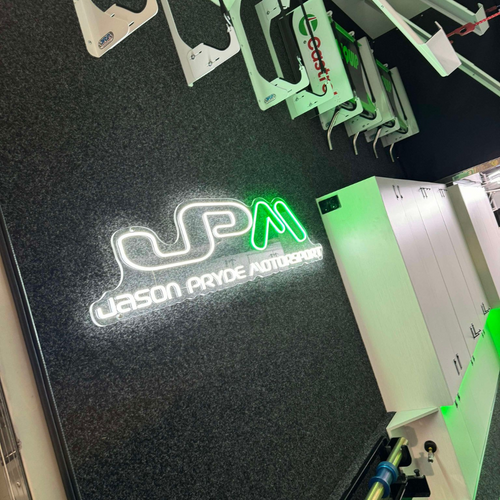Step-by-Step Process of Creating an LED Neon Sign
Introduction
Neon signs are iconic representations of vibrant cities and creative advertising, lighting up storefronts, bars, and art installations for over a century. With the rise of modern LED neon technology, the art of neon has evolved, offering more accessibility and versatility. This guide explores the history, materials, tools, and step-by-step processes involved in creating both traditional and LED neon signs.
A Brief History of Neon Signs
The origins of neon signs trace back to the early 20th century, with French engineer Georges Claude inventing the first neon lamp in 1910. By the 1920s, neon signs gained popularity worldwide as eye-catching advertisements. Traditional neon signs, crafted from glass tubes filled with neon or argon gas, dominated the market for decades. However, the labor-intensive nature of their production required specialized skills. In recent years, LED neon signs have emerged as a modern alternative, mimicking traditional neon's aesthetic while offering enhanced customization and easier installation.
Materials and Tools for Making Neon Signs
Before diving into the manufacturing process, it's essential to understand the materials and tools needed for both traditional and LED neon signs.
Traditional Neon Signs:
Glass Tubes: The primary material for shaping neon signs, usually made from soft lead glass.
Electrodes: Metal electrodes attached to the ends of the glass tubes to conduct electricity.
Gases: Neon or argon gas fills the tubes, with neon producing a red glow and argon glowing blue. Various coatings can yield additional colors.
Transformers: Necessary to increase the voltage needed to ionize the gas inside the tubes.
LED Neon Signs:
LED Flex Neon Tubes: Flexible tubing that contains LEDs, allowing for bending and shaping similar to glass.
Acrylic Backboard: The base to which the LED neon tubes are attached, providing support for the sign.
Power Supply: LED signs operate at lower voltages than traditional neon, requiring an appropriate power supply.
Wiring and Connectors: Used to connect LED strips to the power supply.
Step-by-Step Process for Making Neon Signs
Traditional Neon Signs:
- Designing the Sign: The process starts with creating a design on a computer, printed at full size to serve as a template.
- Bending the Glass: The most challenging step involves heating sections of glass tubes over a flame until they soften enough to bend, then shaping them according to the template.
- Attaching Electrodes: After bending, electrodes are attached to both ends of each section of the glass tube.
- Gas Filling: The air is evacuated from the tubes, and then neon or argon gas is introduced before sealing the tubes.
- Testing and Assembly: The filled tubes are connected to a transformer to test for proper lighting. Multiple sections are assembled to complete the sign.
- Installation: The finished sign is mounted onto a frame or surface, securing the glass tubes with clips or brackets.
LED Neon Signs:
- Designing the Sign: Similar to traditional neon, the process begins with a design. LED technology allows for more flexibility in shapes, colors, and effects.
- Cutting and Shaping the LED Tubes: LED flex neon tubes are cut to required lengths and shaped according to the design, easily bent by hand or simple tools.
- Attaching to the Backboard: The shaped LED tubes are attached to an acrylic backboard using adhesive or clips.
- Wiring: The tubes are wired to a power supply by connecting the LED strips to a low-voltage transformer, ensuring secure connections.
- Testing and Finishing: The sign is tested to ensure all sections light evenly, with adjustments made as needed.
- Installation: LED signs, being lighter, are easier to install using screws, adhesive strips, or brackets, depending on size.
Safety Considerations
Safety is paramount when working with either traditional or LED neon signs.
Traditional Neon Signs:
High Voltage: Ensure all electrical connections are secure and insulated, as traditional neon operates at high voltages.
Glass Handling: Use protective gloves and goggles to avoid breakage and injury when bending and shaping glass.
Gas Safety: Handle gas cylinders with care to prevent leaks or explosions, as neon and argon gases are stored under pressure.
LED Neon Signs:
Low Voltage: LED signs operate at lower voltages, reducing electrical hazards.
Heat: While they produce less heat, avoid placing LEDs in enclosed spaces to prevent heat buildup.
Installation: Ensure the power supply is properly rated for the LED strips and that all connections are secure to prevent short circuits.
Conclusion
Creating neon signs, whether traditional or LED, is a captivating blend of art and science. Traditional neon requires specialized skills and equipment, while LED technology offers a more accessible and versatile option. Whether you’re a business owner seeking a unique storefront sign or a DIY enthusiast exploring this glowing art form, understanding the materials, tools, and processes involved will help you craft a stunning neon masterpiece.
With the right design, careful assembly, and a focus on safety, your neon sign will illuminate any space and leave a lasting impression.
Interested in having a custom neon sign made for your event, business, home or celebration? check out www.neonlanes.com



